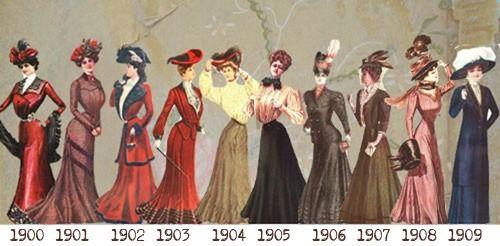Evolution of Head Covering In Christianity
Faith
|
Mar 28, 2018
|
4 MIN READ


Hijab is not a religious tenet solely limited to Islam – in fact, it predates Islam and has been practiced since the inception of Judaism, among other faiths and cultures! In Judaism, the head covering is worn as a show of modesty in addition to denoting the married woman's marital status. Many Orthodox Jewish women today keep the tradition going by wearing snoods, tichels, or wigs after marriage.
St. Paul, one of the early Christian evangelists, wrote to the Church in Corinth, “Every woman praying or prophesying with her head uncovered disgraces her head, for it is the same as if she were shaven. For if a woman is not covered, let her be shaven. But if it is a disgrace for a woman to have her hair cut off or her head shaved, let her cover her head” (Corinthians 11). Hence, we can surmise that covering the head for women was practiced in the early Church.
Many converts to Christianity were Jewish, like Jesus and his family. During the time of Abraham (father of Judaism, Christianity and Islam), the head covering was an expected custom for women. In the Jewish example of Rebekah, who when she saw her future husband Isaac walking towards them in the field, “said to the servant, ‘Who is the man over there, walking in the field to meet us?’ The servant said, ‘It is my master.’ So she took her veil and covered herself.” (Genesis 24:65, NRSV). Upon conversion, their attire remained the same, and the head covering was integrated into the new Christian faith.
With time, Christianity became more structured. Religious Sisters within the Church wore full habits and specifically-made-veils which designated their religious order. Women continued to wear full-length dresses and head coverings. As countries formed within Europe and unique ethnic identities took political shape, clothing customs evolved but the principle of modesty remained the same, especially within Catholicism. After the Protestant Reformation women continued to wear a head covering in both Catholicism and Protestantism. Eventually, the smaller cap started to replace the veil in some Protestant faiths. Society was slowly changing in the next centuries that transpired before the invention of electricity and the steam engine. During this time, societal expectations remained the same – women of a certain status in society were expected to present themselves modestly.


With the dawn of the 20th century, life changed dramatically and quickly in Western society. From the first aircraft flight to the widespread availability of automobiles to new scientific discoveries and the birth of modern art in Paris, the 20th-century world suddenly seemed less stable and secure than it once was (Sayre, 2015). With these changes in Western society, attire changed – especially for women. Skirts became shorter around WWI, and head coverings were not considered essential outside of worship. Hats became a commonplace substitute between the 1920s and 1960s.
For the first time in history, the Catholic Church required head covering for Catholic women in their 1917 Code of Canon Law. With the introduction of the ordinary form of the Catholic Mass at the Second Vatican Council in the early 1960s, many women stopped wearing their head coverings, and Protestant Churches soon followed. However, the Catholic Church’s 1917 head covering requirement was not abrogated until the 1983 Canon Law revision. In recent years, there has been a renewal of head covering within Catholicism, most especially from the post-Vatican II generation. As the holy tabernacle is veiled in every Catholic Church, women are veiling their dignity as the most beautiful creation of God. Even so, hats, scarves, hoods, mantillas, (a sheer lace veil) or even handkerchiefs adorn women’s heads within the Catholic Church and Russian Orthodox Church to this day, as pictured below.


Amish and Mennonite women wear prayer coverings call Kapps that cover the back of the head. These women cover their hair for modesty reasons, as well as carrying out the words ordained in Scripture. Anabaptist women dress simply and modestly as a reflection of their humble lifestyle – one that is often without modern conveniences such as electricity or telephones.
Outside of the Abrahamic faiths, ancient Greek and Roman women covered their heads in public as well. According to historian Lloyd Llewyn-Jones, women of the upper class covered their hair and folded the cloth behind their shoulders. Even full veiling of the head and face was commonplace. The purpose of veiling in this context was a "conscious extension of the house and was often referred to as tegidion, literally meaning “a little roof.” Veiling was thus an ingenious compromise; it allowed women to circulate in public while maintaining the house-bound existence that their society considered ideal.

As the practice of wearing hijab becomes increasingly politicized in today's sociopolitical climate as a symbol of backwardness or oppression, it is interesting to read how and why women of different faiths cover their heads. While the Abrahamic faiths of Judaism, Christianity, and Islam have differences, we have common practices – one of which is the head covering for women. It is a beautiful tradition dating back thousands of years and does not suppress a woman’s individuality and strength, but quite the opposite – it liberates women in that they are not judged by outward appearance but through piety, dignity, value, intelligence, and humility. It's heartening to see that we're all part of a broader group of women around the world who, throughout history, donned their own form of hijab, upholding ideals that are central and universal to us all.
Learned something new from this post? Don't be selfish - share with your friends!
Hijab is definitely a uniting factor between women of different faiths and cultures. What does your hijab mean to you? Let us know in the comments below!
Subscribe to be the first to know about new product releases, styling ideas and more.
What products are you interested in?

